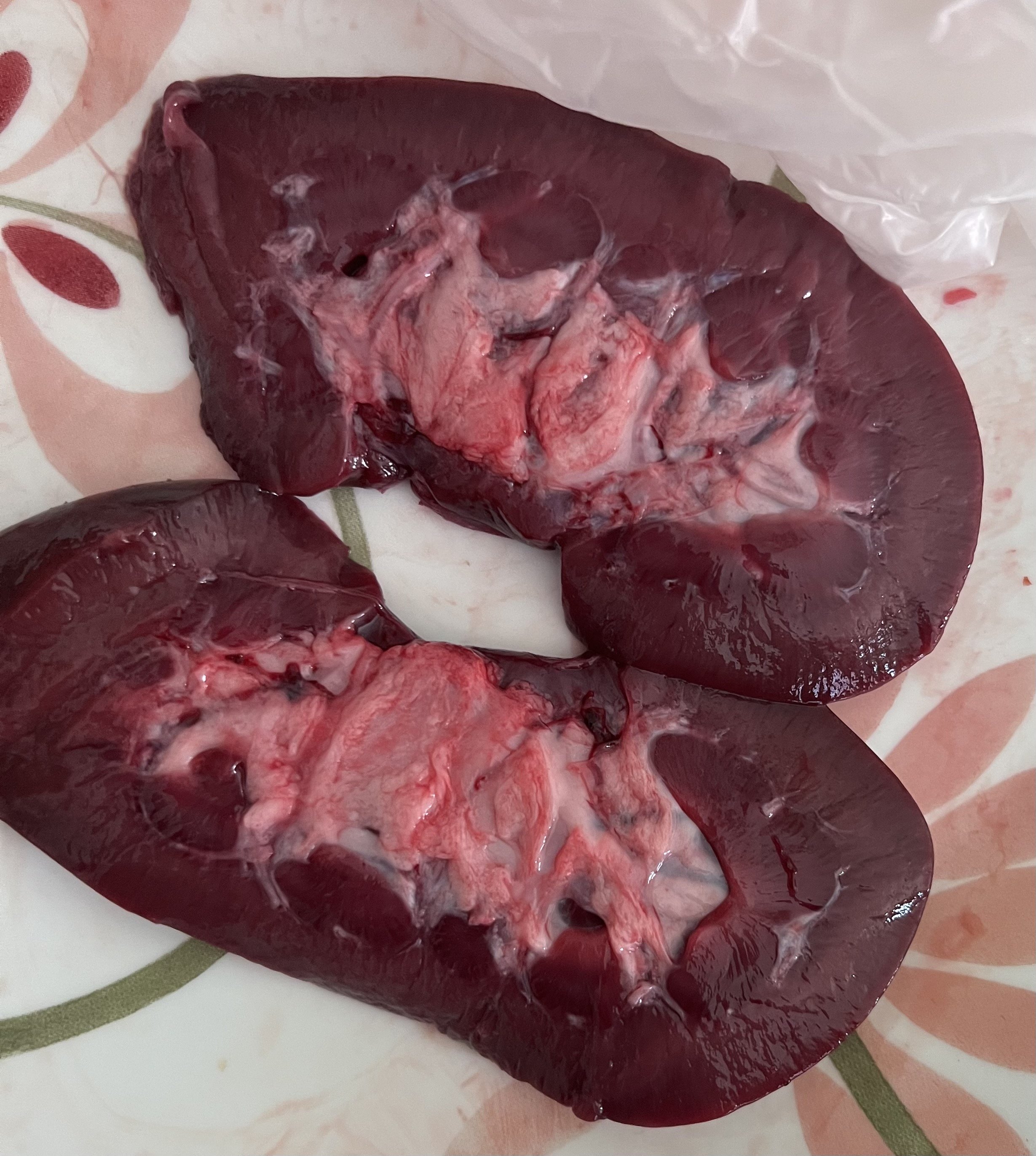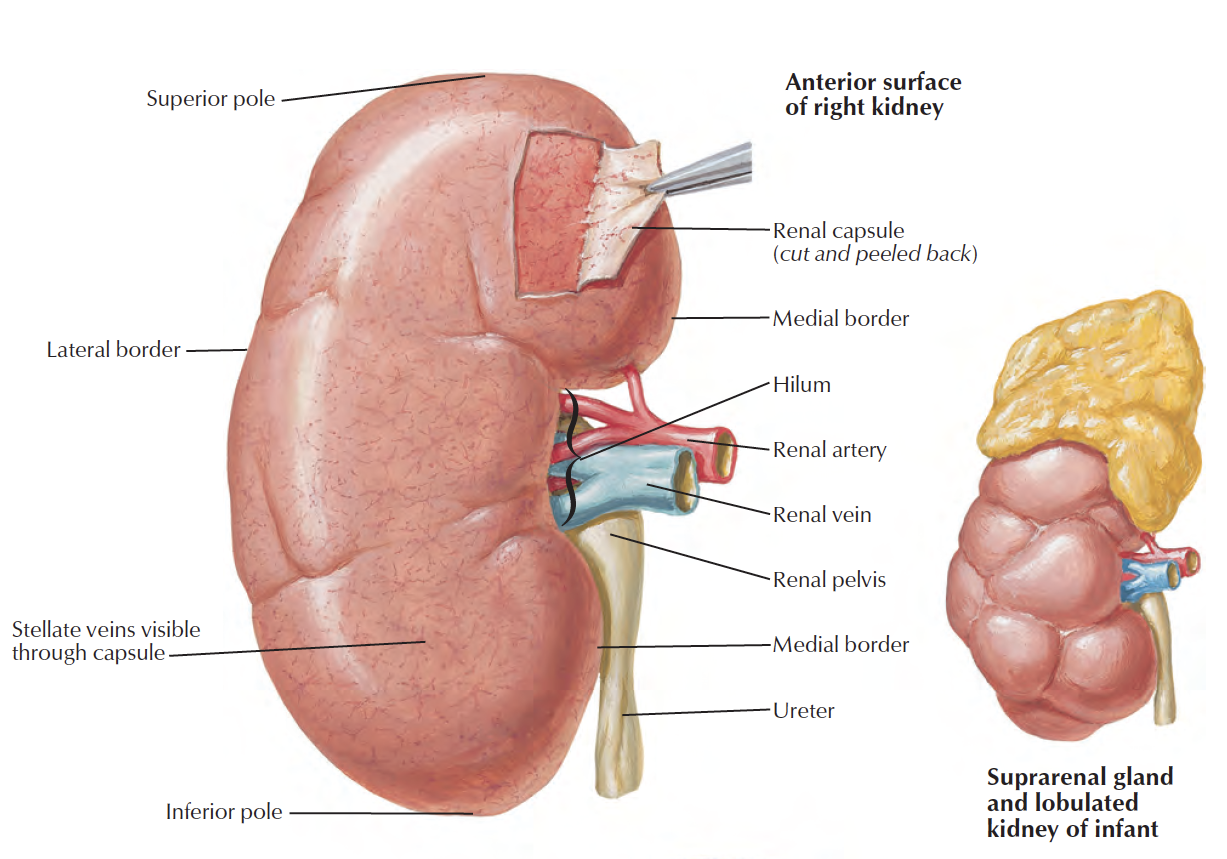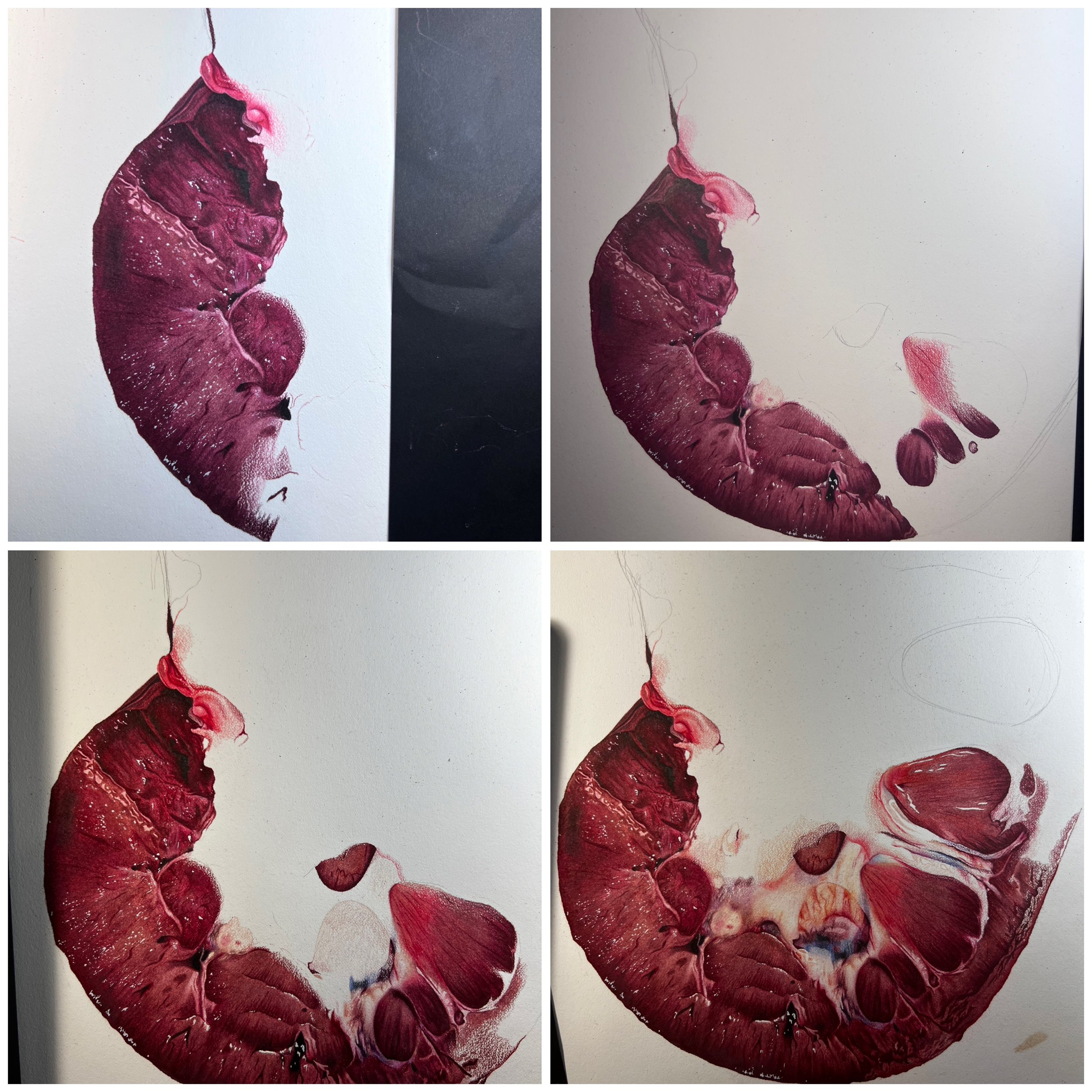Nephros.
Date: May 29, 2023
Medium: Prismacolour pencil crayons
Audience: General Public
Purpose: To practice creating the detail required for hyperrealism and to be able to create the illusion of life on paper.

DEVELOPMENT 1: PHOTO REFERENCES
Photo references of pig kidneys were first collected and studied for colour, texture and detail. Pig kidneys were chosen as the organ of study because of their remarkable similarities to human kidneys, both in structural anatomy and physiology (hence their potential for xenotransplantation surgery.)
DEVELOPMENT 2: TEXTBOOK REFERENCES
Illustrations from the following textbooks and atlases were used to study the anatomy of the kidney: Netters Atlas of Anatomy, Rohens Anatomy: A Photographic Atlas, Grant’s Atlas of Anatomy, Gray’s Atlas of Anatomy, and Thieme Atlas of Anatomy
DEVELOPMENT 3: KIDNEY SKETCHES AND PLANNING SHEET
Prior to creating all of my hyperrealism drawings, I like to create a ‘planning sheet’ where I bring together my ideas for colour, form and texture and create more refined sketches. For this drawing in particular, I sketched out graphite pencil versions of the subject with the correct labelled anatomy, and the different components (renal cortex, medulla, and hilar fat) as well as the colours that would be used for each.
DEVELOPMENT 4: WORK IN PROGRESS SHOTS
I create my pieces from one corner of the page to another-building detail, layering different hues, and adding in specular and reflective highlights as I work so that I can see the drawing come to life and make any corrections as I go.





















